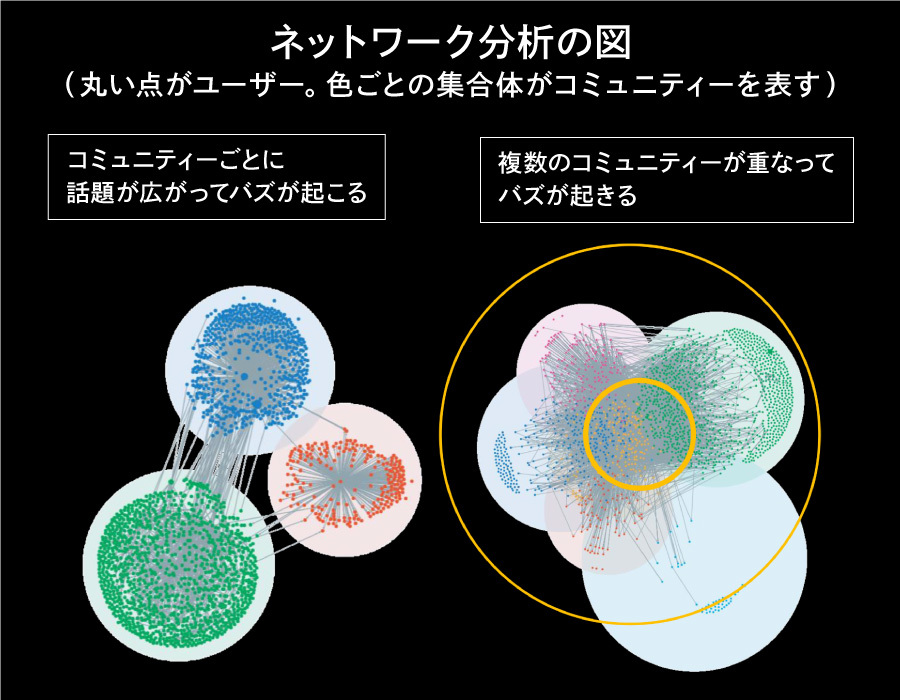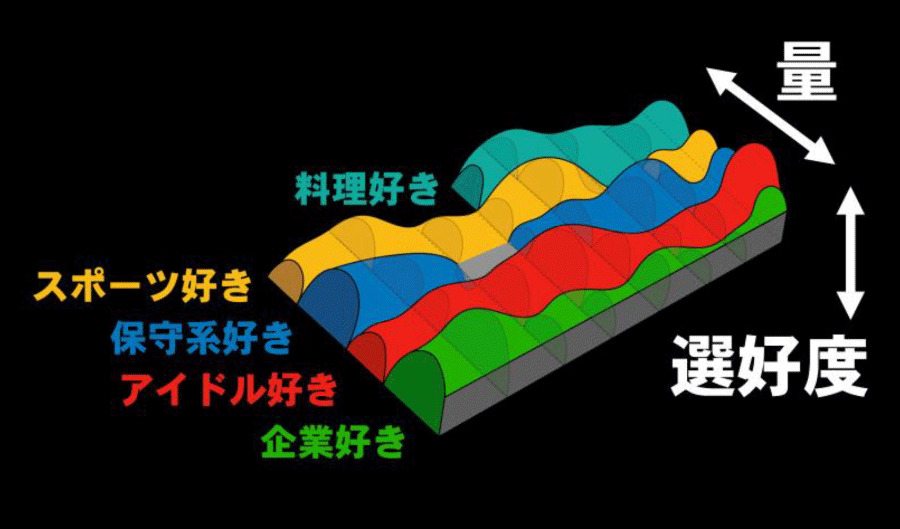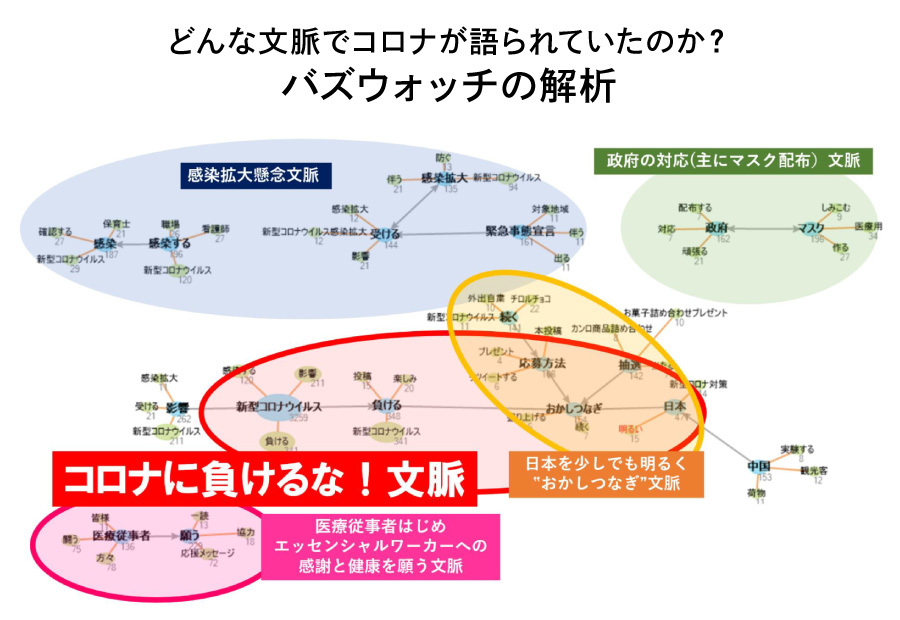Note: This website was automatically translated, so some terms or nuances may not be completely accurate.
It's such a waste if TV commercials and Twitter don't work together!
#Twitter4Dentsu2021 Report
This series explores new possibilities for TV and Twitter. This installment reports on the panel discussion from the Twitter Japan and Dentsu Inc. webinar event "#Twitter4Dentsu2021".
Twitter Japan Representative Director Hiroshi Sasamoto, Dentsu Inc. Creative Director/CM Planner Yusuke Sato, and Dentsu Inc.'s Hiroyuki Taniuchi and Ryo Shimizu—developers of "Buzz Watch," a buzz analysis tool centered on Twitter—unravel the current state and future of buzz generated by the synergy between "TV Commercials × Twitter."
Click the <> icon in the bottom left of the slide for panelist details.
Changes in the TV × Twitter Relationship Over the Past Decade
Twitter, which launched its Japanese version in 2008, saw its usage rate surge dramatically following the 2011 Great East Japan Earthquake, rapidly permeating society. Usage has continued to grow since then, and in recent years, more people enjoy Twitter while watching TV and connect with users who share the same interests or concerns about TV content. Alongside this shift, strategies linking TV commercials—a crucial marketing channel for companies—with Twitter have gained attention.
The panel discussion began by looking back over the past decade to outline how the relationship between TV commercials and Twitter has evolved.
Mr. Sasamoto, who joined Twitter Japan eight years ago, stated: "When I joined, organic connections between TV and Twitter existed, like everyone simultaneously tweeting 'Balus' while watching 'Castle in the Sky' on TV. However, proactive campaigns combining TV and Twitter were virtually nonexistent. In recent years, however, a complementary relationship has emerged where TV content becomes a topic on Twitter via hashtags, and conversely, Twitter trends are picked up by TV."
Mr. Sato, who has worked on commercials like Cup Noodle's "HUNGRY DAYS: Is This Your Youth?" and Pocari Sweat's "Dancing School Trip," reflected, "I think the first time I added a hashtag to a commercial I was in charge of was in 2015."
Mr. Shimizu, involved in developing Buzz Watch (*), also noted, "Around 2016, I think we started seeing TV programs pick up topics trending on Twitter. The Cup Noodles commercial that went viral in 2017 followed that pattern: TV covered what was trending on Twitter, which then amplified the buzz further." It seems the relationship between TV and Twitter grew increasingly close from the late 2010s onward.
Mr. Tanai, who started researching and developing Buzz Watch in 2015 and has continuously tracked Twitter buzz, notes, "Buzz Watch updates its weekly buzz rankings, and from 2017 to 2018, Cup Noodles and Donbei dominated the top two spots. What both commercials share is a mechanism that caters to Twitter users' desire to 'make a witty remark,' making them 'commercials that are good at being remarked upon.' While buzz used to be generated simply by doing something tricky a while back, the methods for creating buzz have undergone significant changes in recent years."
*Buzz Watch: A buzz analysis tool that automatically aggregates data from all tweets in Japan about commercials, TV programs, and trending topics, providing weekly rankings. It features functions to delve into the substance of buzz, including demographic composition (gender/age), sentiment analysis, automatic extraction of representative tweets, and semantic cluster analysis. For details, please see the Web Dentsu Inc. article.
As one mechanism to respond to Twitter users' desire to "tweet back," Sato cited giving campaign slogans the functionality of a tweet hashtag.
For example, in the Cup Noodles "HUNGRY DAYS Aoharu Kayo?" commercial he worked on, popular anime characters appear as modern high school students, depicting a new coming-of-age ensemble drama in a parallel world-like setting. Regarding the catchphrase, he explained, "The word 'youth' ('seishun') is overused, so we used 'Aoharu' instead and added the tagline 'Kayo?' to give it a comedic retort nuance."
He also emphasized that to create ads that aren't easily consumed (ads that aren't forgotten in an instant), it's crucial for TV commercials to become recurring topics of discussion and excitement on Twitter.
"Online and on social media, people enjoy sharing their own interpretations of commercials and building excitement around them. So in commercial production, we employ various tactics to engage viewers: meticulously crafting details so subtle they require careful observation of short-form ads, drastically increasing the number of characters, designing viewer-participation concepts, or continuously creating timelines on Twitter to generate buzz. Nowadays, the passion of those creating commercials comes through. I believe that passion is what draws fans in on Twitter." (Mr. Sato)
Mass-scale buzz is about "classification and boundary-crossing"
As the relationship between TV and Twitter deepens, we're seeing a phenomenon where Twitter buzz gets picked up by mass media—essentially becoming "massified." While Twitter buzz traditionally occurred within specific communities, how should we perceive buzz moving forward?
Mr. Sasamoto posed the question: "Fundamentally, is Twitter itself a mass medium or a community? What do you all think?" In response, Mr. Shimizu explained the structure of Twitter buzz, introducing "network analysis" that schematizes how topics spread on Twitter.

"Fundamentally, on Twitter, buzz occurs as topics spread within each community, as shown in the left diagram. However, as shown in the right diagram, buzz can also occur when multiple communities overlap. In other words, while Twitter is primarily a 'categorization'-centric medium, there are also cases like 'Aoharu kayo.' where multiple communities collaborate to achieve mass reach. Considering this, it becomes crucial to figure out how to create 'topics for everyone' that transcend communities – much like how 'youth' is a theme relevant to many people." (Mr. Shimizu)
Mr. Sato stated the key point for making Twitter go viral: "If you use celebrities or artists in a commercial, you can somewhat predict it becoming a topic within their fan communities. What's crucial is how to trigger secondary diffusion beyond the initial spread. Simply put, 'crossing boundaries' is essential."
Mr. Taniuchi added, "Twitter started as a place for friends to share updates, so fundamentally, I see it as a community-centric medium. In that sense, using Twitter to disseminate information to specific communities is one approach. However, considering that TV commercials aim to capture the interest of a broad audience, it's not enough for a buzz to just happen within a specific community and end there. Mechanisms are needed to cross those boundaries and spread further."
What Does Advertising Planning in the Twitter Era Look Like?
So far, we've discussed how TV and Twitter are now inextricably linked, and what's crucial for turning Twitter buzz into mass reach. Next, we shared perspectives on how advertising planning should evolve alongside Twitter going forward.
Mr. Sato shared his perspective first: "What I've discussed are simple ways to use Twitter, but Twitter has many more features, and I believe new mechanisms and functions will continue to expand. Incorporating these new elements into advertising could be really interesting. I think the combination of Twitter's evolution and creative evolution holds infinite potential, so I want to keep trying new things."
Mr. Sasamoto responded, "We view 2021 as Twitter Japan's second founding period. We plan to expand various features, and we'd be delighted if you could incorporate them creatively."
Meanwhile, Mr. Tanai, who continuously monitors Twitter buzz, stated: "Modern creatives must constantly invent new techniques to resonate on social media. We want to make it possible to observe the reactions to these new creative techniques at a new level." He then introduced that Buzz Watch has already reached the stage where buzz can be cross-tabulated by detailed axes like gender and time series.
"As the resolution of buzz analysis increases, we can understand the full-scale reaction to that expression method on social media. This allows us to check not only which demographics react to what topics (like commercials or programs) and when, but also whether the message is reaching the intended target as planned and how much secondary diffusion is occurring across broader demographics," (Mr. Taniuchi)

Mr. Shimizu offered a different perspective. In April 2020, as the COVID-19 pandemic intensified, he used BuzzWatch to meticulously analyze the contexts in which the virus was discussed. He found that Twitter featured a significant presence of positive narratives like "Don't let COVID beat you!" and "Gratitude and well-wishes for essential workers," noting, "This was a characteristic absent from other media."

"I believe it's important to focus on the positive context found on Twitter and collaborate with those people in corporate activities," said Shimizu.
Mr. Sato shared a new idea: "Hearing this made me want to create something where the passion of the creators becomes the source of the message. If production staff engage positively, something truly good is created, and each person shares their thoughts as a creator on their personal Twitter. I think that kind of creative work would be wonderful too."
"Twitter isn't just an advertising platform; it's a place where people's genuine voices intertwine. Naturally, that includes creators' feelings. If we can positively harness those sentiments, it might give birth to a new form of communication," concluded Sasamoto, wrapping up the panel discussion.
Was this article helpful?
Newsletter registration is here
We select and publish important news every day
For inquiries about this article
Back Numbers
Author
#Twitter4Dentsu2021 Report
Report on the Twitter Japan × Dentsu Inc. webinar event exploring new possibilities for television and Twitter.

